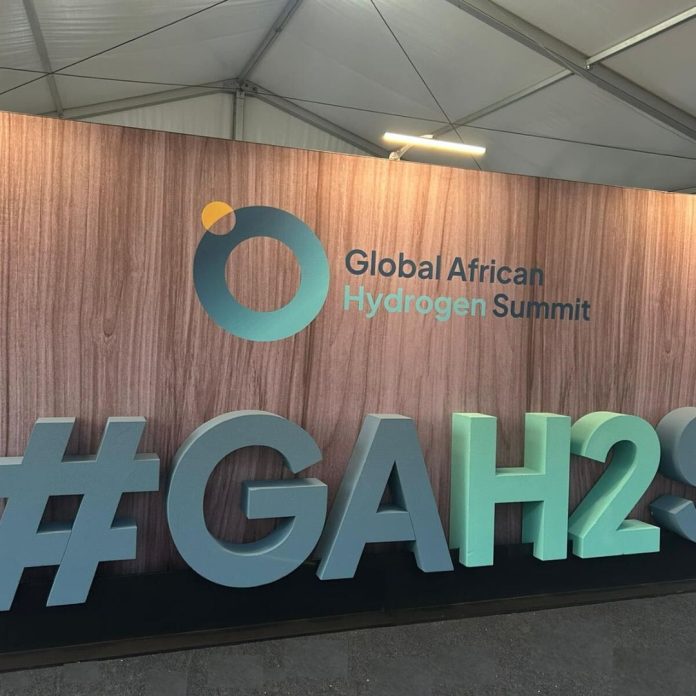The Global African Hydrogen Summit has kicked off today (9 September 2025), bringing together policymakers, financiers, technology developers and industrial leaders in a forum designed to convert Africa’s renewable energy potential into bankable hydrogen projects. Convened under the patronage of the Government of Namibia and supported by the Namibia Green Hydrogen Programme, the three-day meeting signals an inflection point in the continent’s positioning within the global clean energy transition.
The scale of participation underscores both interest and urgency. More than 1,500 attendees from 75 countries are registered, with over 700 conference delegates, 150 exhibitors and 125 speakers. Fifty African projects identified as investment-ready are being presented to international lenders and corporate buyers. In addition to plenary discussions, the programme features accredited technical masterclasses, closed-door leadership sessions under Chatham House Rule, and project investment roundtables where developers meet directly with multilateral financiers and sovereign wealth funds. The structure is intended to shift from dialogue to transaction.
For Namibia, the Summit serves as both a showcase and a test. The government has staked its industrial strategy on becoming a low-cost producer of hydrogen and derivatives such as ammonia and green iron, leveraging abundant solar and wind resources, existing deep-water ports and a comparatively stable governance framework. Hyphen Hydrogen Energy’s multi-billion-dollar development in Tsau //Khaeb National Park is the most prominent example, often cited by speakers as emblematic of the scale required. Yet, as participants note, even with high-quality resources, the viability of such projects depends on access to concessional capital, long-term offtake agreements, and credible regulatory frameworks.
The central issue at Windhoek is not technical feasibility but commercial structure. Electrolyser technology is mature, and Namibia’s renewable resource base is not in question. What investors emphasise is the absence of sustained demand signals and the premium between fossil-based hydrogen and green alternatives. Instruments such as the European Hydrogen Bank and H2Global’s double-sided auctions are repeatedly referenced as necessary to bridge this gap. H2Global’s award of a long-term ammonia contract in Egypt is presented as an early demonstration of how offtake guarantees can unlock investment. Without similar arrangements, African projects risk being stranded at the proposal stage.
Read also: Eastern Africa unveils first regional guide to scale Carbon Markets at ACS 2
Financing cost is the second constraint. African projects typically face higher weighted average costs of capital than competitors in Europe or the Middle East. This diminishes the advantage of low-cost renewable energy. Namibian officials have acknowledged this reality, indicating that they are exploring contract-for-difference style mechanisms and targeted credit enhancements to attract long-term buyers. Development finance institutions and multilateral lenders are viewed as central to reducing perceived risk and crowding in private capital. Several sessions in the Summit are dedicated to blended finance models, green bonds and risk-sharing facilities, reflecting the need for financial engineering as much as engineering of plants themselves.
Infrastructure is the third determinant. Producing and exporting hydrogen requires not only generation and electrolysis but desalination, transmission lines, storage, and transport corridors. Namibia’s ports at Walvis Bay and Lüderitz are central to this plan. The Namibian Ports Authority is presenting a fifty-year master plan that includes specialised ammonia terminals, bulk cargo facilities and integration of renewable power within port operations. Rail upgrades and industrial parks, including the proposed !Nara Namib Industrial Zone, are designed to anchor downstream processing of minerals with green energy inputs. These investments are not ancillary; they form the basis of Namibia’s argument that hydrogen can catalyse industrial diversification and employment, not just commodity exports.
Environmental and social dimensions are also visible throughout the Summit. Delegates acknowledge that hydrogen projects require large tracts of land and significant water inputs. Projects near the Tsau //Khaeb park face scrutiny over biodiversity impacts, while community groups question how benefits will be distributed locally. In response, organisers have introduced sessions on environmental management, community engagement and local content, and the Summit will feature awards recognising inclusive approaches. This emphasis reflects an awareness that financial closure will be unattainable without credible strategies on environmental safeguards and social acceptance.
The daily programme demonstrates the attempt to balance high-level strategy with practical skills. Masterclasses on socio-economic hurdles, financing tools and regulatory design sit alongside technical seminars on storage, shipping and workforce development. Youth delegates, numbering around 100, are participating in a dedicated track covering career pathways and entrepreneurial opportunities, with the stated objective of building the skills base for a nascent industry. These sessions reinforce the argument that hydrogen development is as much about institutional capacity and workforce planning as it is about energy technology.
Read also: Kenya releases report on Africa’s climate progress since inaugural ACS in 2023
At the exhibition, international suppliers display electrolyser modules, ammonia synthesis units and digital management systems. European and Asian delegations use the space to highlight their readiness to act as both investors and offtakers. Multilateral agencies, including the World Bank and UNIDO, host panels on regulatory readiness and industrial decarbonisation, linking the Summit’s ambitions to broader climate finance and trade agendas. For many participants, the exhibition floor is where the tangible assessment occurs: which projects have credible partners, which technologies are commercially proven, and which developers can demonstrate readiness beyond concept.
The outcomes of the Summit will be measured not in speeches but in commitments. Organisers state that success will be assessed by announcements of memoranda of understanding, financing agreements and policy frameworks. Analysts suggest that the most likely immediate results are conditional offtake agreements and the establishment of blended finance facilities, rather than final investment decisions. Yet even incremental steps are significant in a market where the primary challenge remains moving from declarations of intent to enforceable contracts.
The Global African Hydrogen Summit (9-11th September), illustrates both the scale of Africa’s renewable potential and the obstacles to unlocking it. Technical capacity is available, and global demand for low-carbon molecules is rising. But until commercial frameworks, risk-sharing mechanisms and infrastructure investments align, the continent’s hydrogen projects will remain more abundant in announcements than in shipments. Windhoek offers a concentrated forum where these elements are negotiated in real time. The test will be whether the discussions held over these three days result in structures that enable African hydrogen to compete on international markets while generating durable local economic value.






